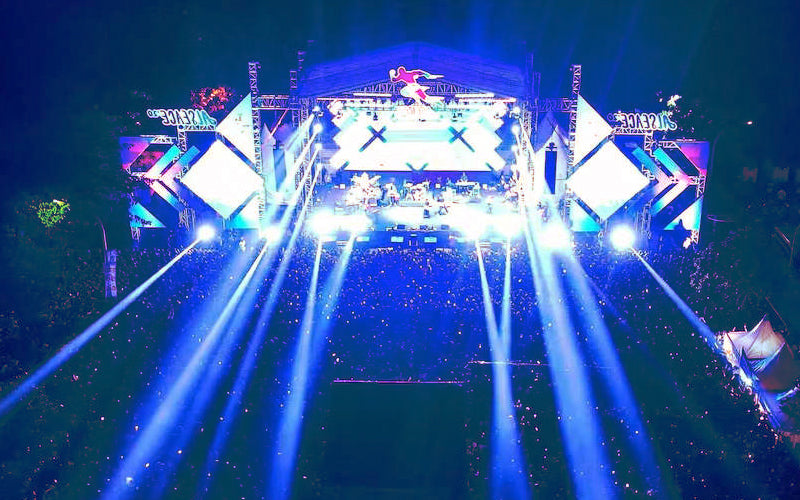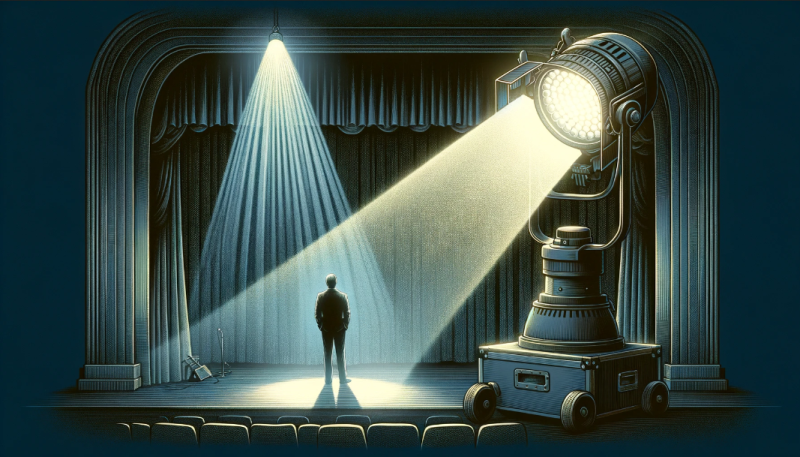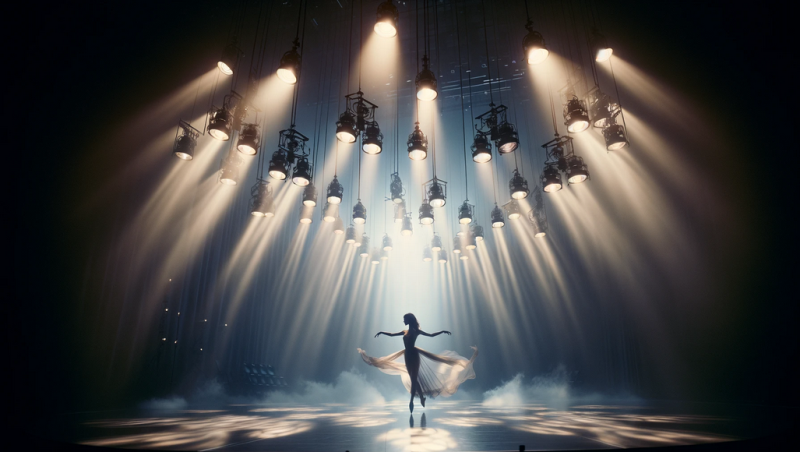Mastering the Fundamentals of Stage Lights Design: A Comprehensive Guide

The Importance of Stage Lights Design
Stage lights design plays a crucial role in creating a captivating and immersive experience for the audience. It goes beyond simply illuminating the stage; it sets the mood, enhances visibility, and conveys emotions to support storytelling.
Setting the Mood and Atmosphere
One of the primary functions of stage lights design is to set the mood and atmosphere of a performance. By using different lighting techniques, colors, and intensities, lighting designers can create various atmospheres ranging from romantic and intimate to suspenseful and dramatic. For example, warm hues like reds and oranges can evoke feelings of passion or excitement, while cool blues can create a sense of calmness or mystery.
Enhancing Visibility and Focus
Good stage lighting ensures that performers are clearly visible to the audience. By strategically placing lights at different angles and positions, lighting designers can eliminate shadows and ensure even illumination across the stage. This not only helps the audience see every detail but also allows performers to feel confident on stage knowing that their movements are well-lit.
Conveying Emotions and Supporting Storytelling
Stage lights design has the power to evoke emotions in the audience and enhance storytelling. Lighting cues can be used to highlight key moments or characters, creating visual focal points that draw attention. For example, a spotlight on a solo performer can convey their importance or vulnerability in a scene. Additionally, changes in lighting intensity or color can signify shifts in mood or indicate transitions between different scenes or settings.
According to statistics data from Newfeel Laser RGB F8 Series, powerful laser beams with sharpness and intensity are capable of delivering impressive graphics capabilities. These lasers offer various control modes catering to different preferences and requirements.
Understanding the Basics of Stage Lights Design
To master stage lights design, it is essential to have a solid understanding of the basics. This includes knowledge about different types of fixtures, lighting control systems, positions and angles, as well as the use of lighting accessories.
Fixtures and Their Functions
Stage light fixtures come in various types, each serving a specific purpose in illuminating the stage. Some common types include spotlights, floodlights, wash lights, and moving lights. Spotlights are used to highlight specific areas or performers on stage, while floodlights provide broad and even illumination. Wash lights create a wash of color or light across the stage, adding depth and atmosphere. Moving lights offer versatility with their ability to change position and project different patterns or colors.
Lighting Control Systems
Lighting control systems allow designers to manipulate the intensity, color, and movement of stage lights. These systems can be operated manually or programmed for automated control during performances. There are different types of control systems available such as DMX (Digital Multiplex), which is widely used in the industry for its flexibility and compatibility with various lighting fixtures. Understanding how to operate and program these control systems is crucial for achieving desired lighting effects.
Lighting Positions and Angles
The placement of lights on stage plays a significant role in creating different effects. Common lighting positions include front-of-house (FOH), side-stage, overhead grids, and floor-level positions. Each position offers unique advantages depending on the desired effect or scene. Additionally, the angle at which light is directed onto the stage can greatly impact visibility and mood. Experimenting with different angles allows designers to achieve desired lighting effects that enhance performances.
Lighting Accessories
Lighting accessories are additional tools that can be used to modify or enhance stage lighting effects. Examples include gels or filters that alter the color temperature or add specific colors to light beams. Diffusion materials can soften harsh light sources for a more pleasing effect. Barn doors, flags, and gobos are accessories used to shape or control the direction of light. Understanding the functions and applications of these accessories is crucial for selecting the right tools to achieve specific lighting needs.
For example, the Betopper LM0910 offers 3W and 5W RGB animation laser lights that can be controlled via DMX, sound activation, or set to auto mode. These versatile fixtures provide designers with options to create dynamic lighting effects.
By understanding the basics of stage lights design, including fixtures, control systems, positions and angles, as well as accessories, designers can lay a strong foundation for creating impactful and visually stunning performances.
The Power of Colors in Stage Lights Design
Colors have a profound impact on our emotions and can greatly influence the mood and atmosphere of a performance. In stage lights design, understanding the psychological impact of colors, applying color theory, mastering color mixing techniques, and considering color temperature are all essential elements.
Psychological Impact of Colors
Different colors evoke different emotions and have the power to create specific moods on stage. Warm colors like red, orange, and yellow tend to energize and evoke feelings of excitement or passion. Cool colors such as blue, green, and purple have a calming effect and can create a sense of tranquility or mystery. Understanding how colors affect emotions allows lighting designers to intentionally manipulate the audience's emotional response to enhance storytelling.
Color Theory in Lighting Design
Color theory provides guidelines for creating harmonious color palettes that work well together on stage. It involves understanding concepts such as complementary colors (colors opposite each other on the color wheel), analogous colors (colors adjacent to each other on the color wheel), and triadic colors (three evenly spaced colors on the color wheel). By using these principles, lighting designers can create visually appealing compositions that support the overall aesthetic of a performance.
Mixing and Blending Colors
The ability to mix and blend colors is crucial in stage lights design. Lighting designers use various techniques to achieve desired hues by combining primary colors—red, green, and blue—to create secondary colors like cyan, magenta, yellow, as well as an array of custom shades. Color mixing tools such as gels or filters allow for precise control over the intensity and saturation of different hues. Smooth transitions between colors can be achieved through careful programming or manual adjustments during performances.
Color Temperature's Influence
Color temperature refers to the perceived warmth or coolness of light sources. It plays a significant role in setting the mood on stage. Warm white light with a lower color temperature creates a cozy or intimate atmosphere, while cool white light with a higher color temperature can evoke a sense of spaciousness or formality. Lighting designers must consider the desired scene or mood and choose the appropriate color temperature to enhance the overall visual experience.
By harnessing the power of colors in stage lights design, lighting designers can create captivating and emotionally impactful performances that resonate with audiences.
Mastering Lighting Techniques and Effects
Lighting techniques and effects are essential tools for creating visually captivating and dynamic stage productions. By understanding how to manipulate light to create depth, control shadows, incorporate gobos and textured filters, and adjust light levels, lighting designers can elevate the overall impact of their designs.
Becoming a Master of Stage Lights Design
To become a master of stage lights design, it takes continuous learning, practice, and a commitment to honing your skills. By experimenting with different techniques and effects, building a strong portfolio, and networking with industry professionals, you can elevate your expertise in this field.
Continuous learning and practice are essential for staying up-to-date with the latest trends and technologies in stage lights design. Attend workshops, seminars, and conferences to expand your knowledge and gain insights from industry experts. Take every opportunity to apply what you learn through hands-on experience and experimentation.
Experimenting with different techniques and effects allows you to develop your unique style as a lighting designer. Try out various lighting positions, angles, colors, and textures to create captivating visual experiences. Embrace innovation by exploring new tools and equipment like the Betopper LS3000 RGB, which offers impressive graphics capability and multiple control modes. Push the boundaries of what is possible with stage lighting.
Building a strong portfolio is crucial for showcasing your skills and attracting potential clients or employers. Document your work by capturing high-quality photographs or videos of your lighting designs in action. Include diverse projects that demonstrate your versatility across different genres or styles of performances.
Networking plays a significant role in advancing your career as a lighting designer. Connect with other professionals in the industry through events or online platforms. Collaborate on projects to expand your network while gaining valuable insights from experienced colleagues.
By continuously learning, experimenting with different techniques, building an impressive portfolio, and networking within the industry, you can become a master of stage lights design who creates impactful visual experiences that leave lasting impressions on audiences.





Dejar un comentario